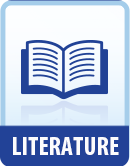|
This section contains 234 words (approx. 1 page at 400 words per page) |

|
Research the Assyrian Empire. Where was it? What were the characteristics of its culture and society? Who were its important leaders? What legacies did it leave to the modern world?
Dante's Divine Comedy, Shelley's "The Triumph of Life," and Viereck's "For An Assyrian Frieze" all use a similar verse formthree-line stanzas. How does this verse form help the poem to move along? What does the rhyme in Dante's and Shelley's poems contribute that Viereck did not want in his poem? Why do you think Viereck made that decision?
John Keats's poem "Ode on a Grecian Urn" and Percy Shelley's poem "Ozymandias," both written at approximately the same time, express very different impressions that a speaker obtains by looking at an ancient artifact. What does each speaker get out of his artifact? Viereck's poem also involves an observer gazing upon an ancient...
|
This section contains 234 words (approx. 1 page at 400 words per page) |

|




